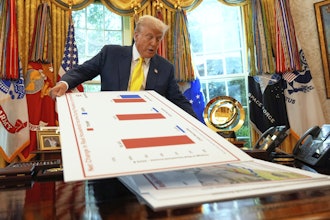Economists from the MAPI Foundation are less optimistic about U.S. manufacturing production over the next two years but believe that the sector will add more jobs than previously projected.
The group's latest quarterly economic forecast estimated that production would increase by 2.6 percent next year and by 3 percent in 2017, down from the 3.4 percent and 3.1 percent, respectively, in the August forecast.
U.S. manufacturers, however, should add 100,000 jobs in 2016 and 110,000 in 2017. The previous analysis expected 94,000 added jobs next year and only 30,000 in 2017.
Read more: Improving business growth by achieving resiliency.
MAPI Foundation Chief Economist Dan Meckstroth said that domestic demand will maintain growth in the U.S. manufacturing sector despite deflationary pressure stemming from falling energy prices, low commodity prices and sluggish overseas economies.
He added that the difficulties of early 2015 — particularly a harsh winter and a port strike along the West Coast — would likely not impact 2016.
"We expect a modest acceleration in manufacturing growth over the next two years before it decelerates," Meckstroth said. "Consistently strong job growth is driving the economy. New workers mean more income, which translates into more spending."
This year, the report expects just 1.8 percent growth in production and 46,000 more manufacturing jobs. The August forecast expected 2.3 percent growth and 124,000 added jobs.
The MAPI forecast projected the nation's overall inflation-adjusted GDP to increase by 2.9 percent and 2.7 percent over the next two years, both unchanged compared to the August report.
Meckstroth, however, said that the strength of the dollar will contribute to a reduction in GDP growth "by 0.4 percent in 2016 and 2017, with a negative effect on inventories and net exports."
A report earlier this month from the Institute for Supply Management found that inventory levels contracted in October for the fourth consecutive month as companies aimed to reduce the potential impact of falling prices.
This week's MAPI Foundation report, meanwhile, anticipated that although exports should increase by 3 percent and 4 percent on an inflation-adjusted basis this year and next, imports would climb 5.6 percent and 7.5 percent over that span.
That could exacerbate the nation’s trade deficit, particularly after the gap in the manufacturing sector reportedly set a new record in September.






















